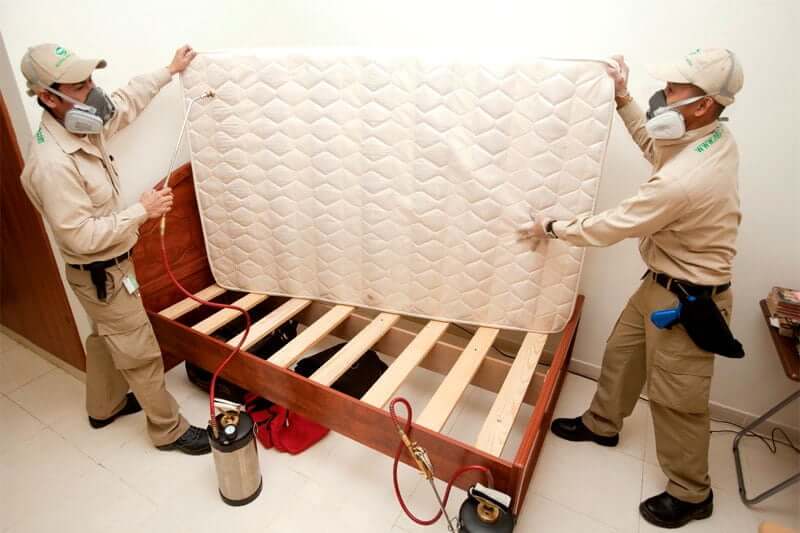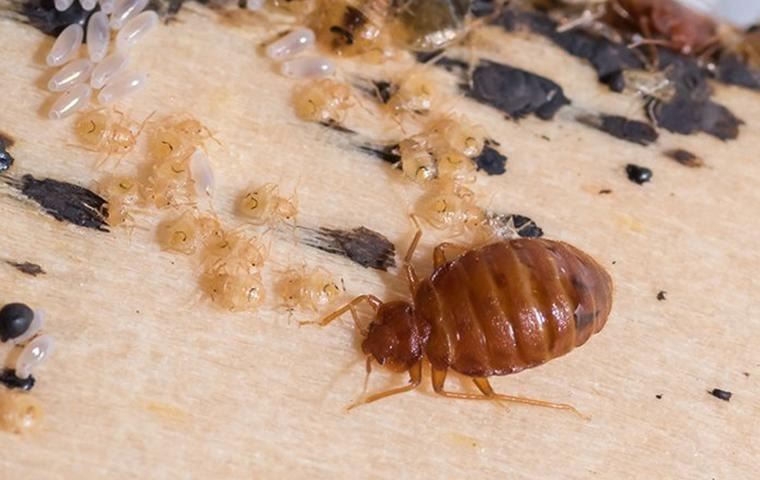Obtain Educated Regarding the Kinds of Pest Control Methods and Their Benefits for Homeowners
Recognizing the different bug control techniques readily available to house owners is essential for effective bug management. Homeowners who are educated can make calculated selections that not only address parasite problems but also boost the total quality of their living atmosphere.
Chemical Pest Control Approaches
Chemical parasite control techniques are a critical part of incorporated insect monitoring strategies for homeowners seeking reliable remedies to pest infestations. These techniques entail the application of chemical materials developed to get rid of or hinder pests that threaten personal effects, health, and convenience. Common chemicals made use of include pesticides, fungicides, herbicides, and rodenticides, each tailored to target specific insects.
The key advantage of chemical pest control is its fast effectiveness; several formulations provide prompt results, decreasing pest populations dramatically quickly. Additionally, developments in chemical solutions have caused items that are a lot more environmentally friendly and have lower poisoning levels for non-target microorganisms when used properly.

Organic Parasite Control Techniques
All-natural insect control approaches have actually gotten prominence as home owners look for safer and much more sustainable alternatives to typical chemical strategies. Organic bug control techniques utilize natural predators, bloodsuckers, or microorganisms to take care of insect populations efficiently. This technique is not only eco-friendly but also decreases the risk of harm to non-target types, consisting of valuable pests and wild animals.
One of one of the most typical biological control techniques entails introducing all-natural killers right into the atmosphere. Ladybugs can be made use of to manage aphid populaces, while nematodes target soil-dwelling bugs like grubs. In addition, parasitoids-- organisms that live on or within a host-- can be utilized to control details insect varieties by laying eggs inside them, ultimately bring about their demise.
An additional strategy is making use of biopesticides, which are originated from all-natural products such as plants, minerals, or germs (bed bug exterminator). These items can effectively target parasites while posturing marginal risk to pet dogs and humans. Overall, biological insect control techniques provide homeowners with a reliable ways of pest administration that aligns with environmental concepts, advertising a healthier living environment while decreasing dependence on synthetic chemicals
Mechanical Insect Control Techniques
Mechanical insect control methods include a range of approaches that physically avoid or get rid of bugs without the usage of chemicals. These strategies are particularly beneficial for home owners looking for eco-friendly alternatives while ensuring the safety of their space.
One common approach is the usage of barriers, such as catches, internet, and screens, which stop insects from getting in homes or certain areas. For instance, mounting home window screens can effectively maintain pests out, while using physical obstacles around gardens can discourage bigger bugs like deer or bunnies. Additionally, mechanical traps developed for rats can catch and remove these insects without the demand for harmful compounds.
Another efficient method involves the usage of vacuum cleaners and mops to remove bugs straight from surface areas. Normal cleaning and upkeep can significantly lower pest populations by removing food sources and hiding areas. Additionally, utilizing tools like ultrasonic bug repellents can deter various pests via noise waves that are undesirable to them however faint to human beings.
Social Parasite Control Practices
Social insect control techniques concentrate on modifying the environment and administration strategies to develop problems that are less for pest invasions. These practices are fundamental in preserving a balanced environment and minimizing the dependence on chemical interventions. By changing farming methods, property owners can successfully hinder parasites while advertising plant health and wellness.
One common strategy includes plant turning, which interrupts the life cycles of bugs by altering the types of plants grown in a specific area (bed bug exterminator). This not only minimizes pest populations however also boosts dirt health and wellness. Additionally, intercropping-- growing diverse plants in closeness-- can puzzle insects and decrease their ability to locate their favored host plants
Water management is an additional essential element of cultural methods. Appropriate watering methods can avoid standing water, which works as a breeding place for mosquitoes and various other bugs. Keeping tidiness in and around the home, such as regularly removing debris and food waste, site link can substantially lower insect attraction.
Incorporating these social practices right into a detailed insect management technique allows property owners to produce an environment that naturally hinders insects, therefore improving the efficiency of other control techniques while advertising sustainable horticulture and landscaping.

Integrated Bug Monitoring Approaches
Integrated Bug Administration (IPM) represents an all natural technique that incorporates different methods to successfully handle parasite populations while minimizing ecological impact. This technique integrates organic, cultural, physical, and chemical techniques to accomplish lasting insect control. By examining pest populations and their all-natural enemies, IPM highlights monitoring and determining bugs prior to executing control actions.
One of the core concepts of IPM is making use of thresholds, which establish the degree of pest task that warrants treatment. This ensures that treatments are used only when necessary, minimizing the reliance on chemical pesticides. Biological control methods, such as presenting all-natural pear phone predators or parasites, job in combination with cultural practices like plant turning and environment manipulation to disrupt pest life cycles.
In addition, IPM motivates using least-toxic chemical options when intervention is necessary, prioritizing products that position minimal risk to non-target organisms and the environment. For property owners, embracing IPM approaches not only improves the efficacy of bug administration however likewise promotes a much healthier living setting, promoting biodiversity and reducing chemical direct exposure. Inevitably, IPM empowers home owners to make educated choices that balance pest control with environmental responsibility.
Verdict
In verdict, recognizing the numerous parasite control approaches encourages home owners to make enlightened choices pertaining to pest monitoring. Each technique-- chemical, organic, mechanical, cultural, and integrated pest monitoring-- provides distinct advantages that cater to different requirements and preferences.
Recognizing the different insect control techniques available to home owners is vital for efficient insect monitoring.Chemical parasite control techniques are a critical component of incorporated parasite administration techniques for property owners seeking reliable options to pest invasions. Overall, organic bug you could try these out control techniques give house owners with an effective means of bug management that straightens with environmental concepts, promoting a healthier living atmosphere while lowering reliance on synthetic chemicals.
Social insect control practices concentrate on modifying the atmosphere and management methods to produce problems that are much less helpful to pest invasions.In conclusion, comprehending the various bug control methods equips homeowners to make educated choices pertaining to pest administration.